Tweaking the solar kit
07/21/2021. In case you need to know this, inserting a 20mm extension between the ASI120 and the tilt-plate with the integral barlow produces a solar disc 3490 pixels across. That's a plate scale of 0.54 arc seconds per pixel. Doesn't sound like much of a difference (0.54 vs 0.66), and I can't tell what the effect on the image quality is because with the extension in place, Newton's rings are back. Go figure. I settled on the lesser focal length with the camera close-coupled after just a few samples.
Listen, if you want something that sounds impressive, consider the popular notion of the 35mm "equivalent focal length" of crop-sensor cameras. Under that rubric, the ASI120MM and this telescope are working somewhere about 7,800mm "equivalent focal length." The actual, real, genuine focal length at the image plane is around 1,172mm (see previous page).
I enjoyed good polar alignment and good seeing at the lake access lot this morning, but a slight breeze was sometimes troublesome (so I selected a little more gain, 40, and a considerably faster shutter speed, 2ms, than last time). Increasing display brightness and selecting an exaggerated display contrast made focusing much easier. I kept the histogram display in view and kept highlights at or below level 220 (of 256). I saw no speed difference with or without the live histogram display, contra some advice online, but my frame rates are so low that's not much of a surprise.
I tried some 16-bit .SER files for comparison with my usual 8-bit .AVI files. At first glance, I'm better off with a 1,000 frame 8-bit AVI than with a 250 frame 16-bit SER but that's just one session's impression. The frame rate is cut in half (down to 7 fps) with the extra data in the SER files. When we get some really bright flaring, it will be worth trying again. Today I am less impressed with the 1.5x drizzle option in AS!3. I got my best results today without drizzling.

Not that there's anything wrong with .SER files.
Best 25 of 250 frames, 16-bit.
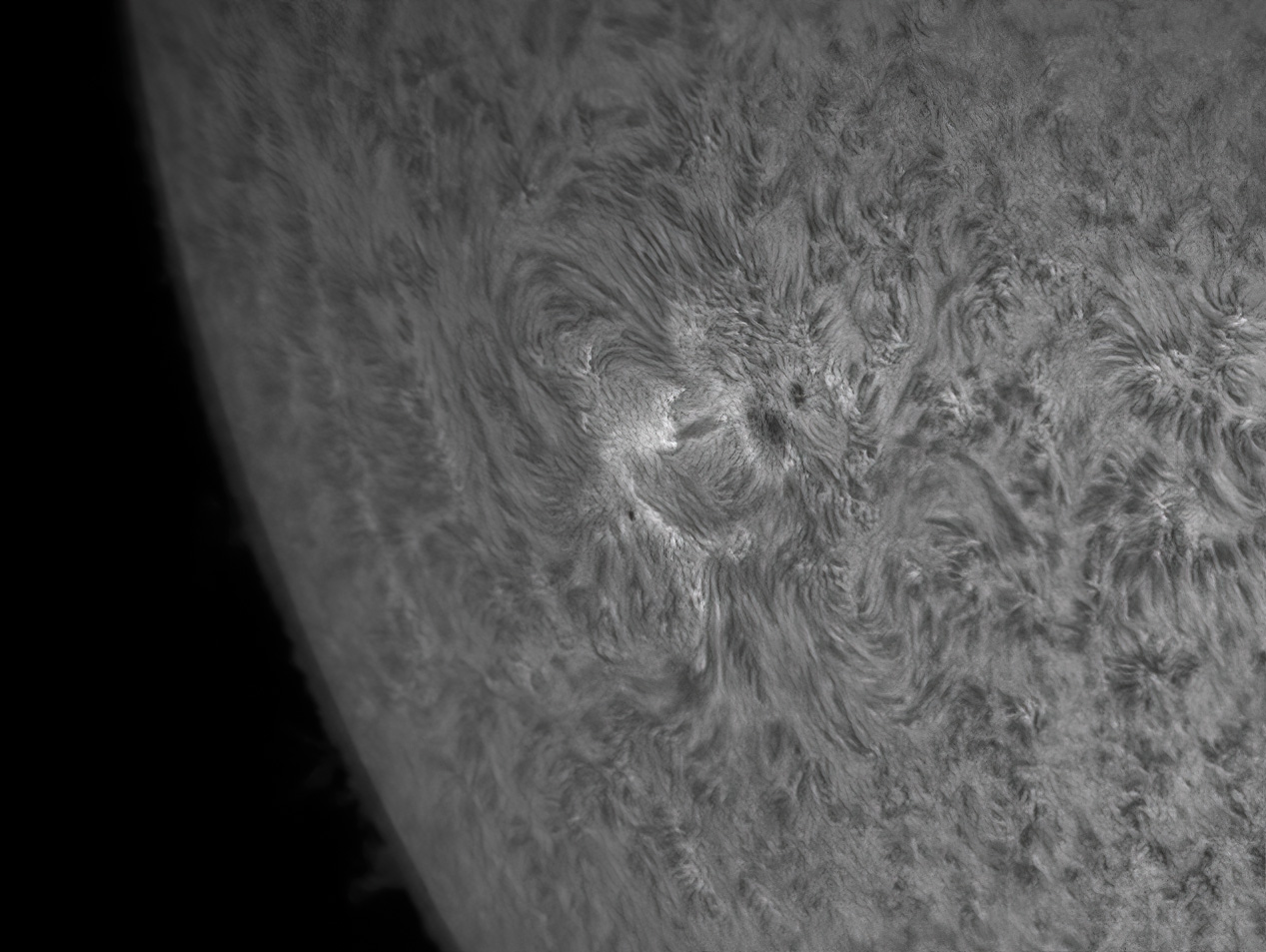
Coming attraction.
Best 250 of 1,000 frames. 8-bit.
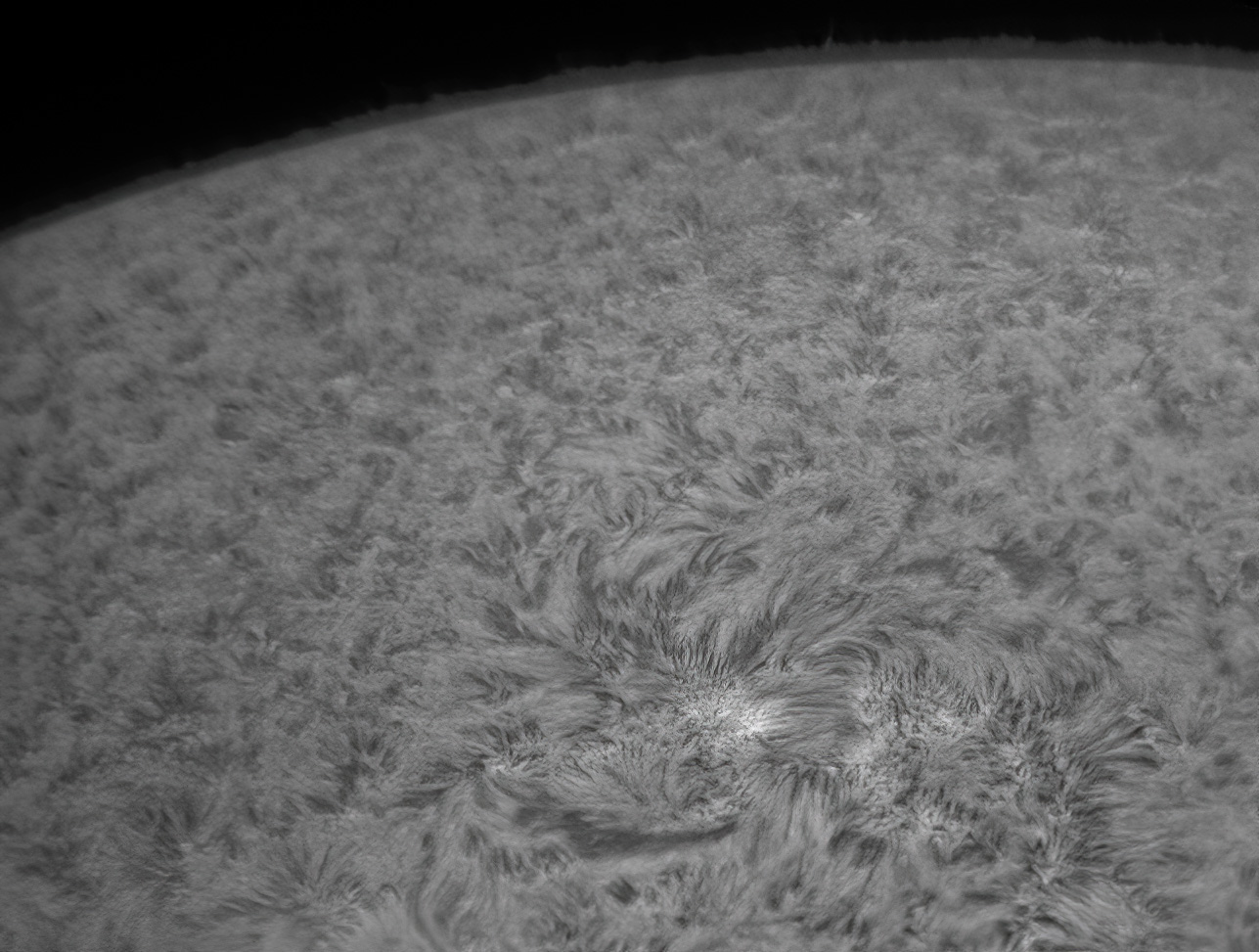
A whirlpool on the Sun.
Best 125 of 250 frames. 8-bit.
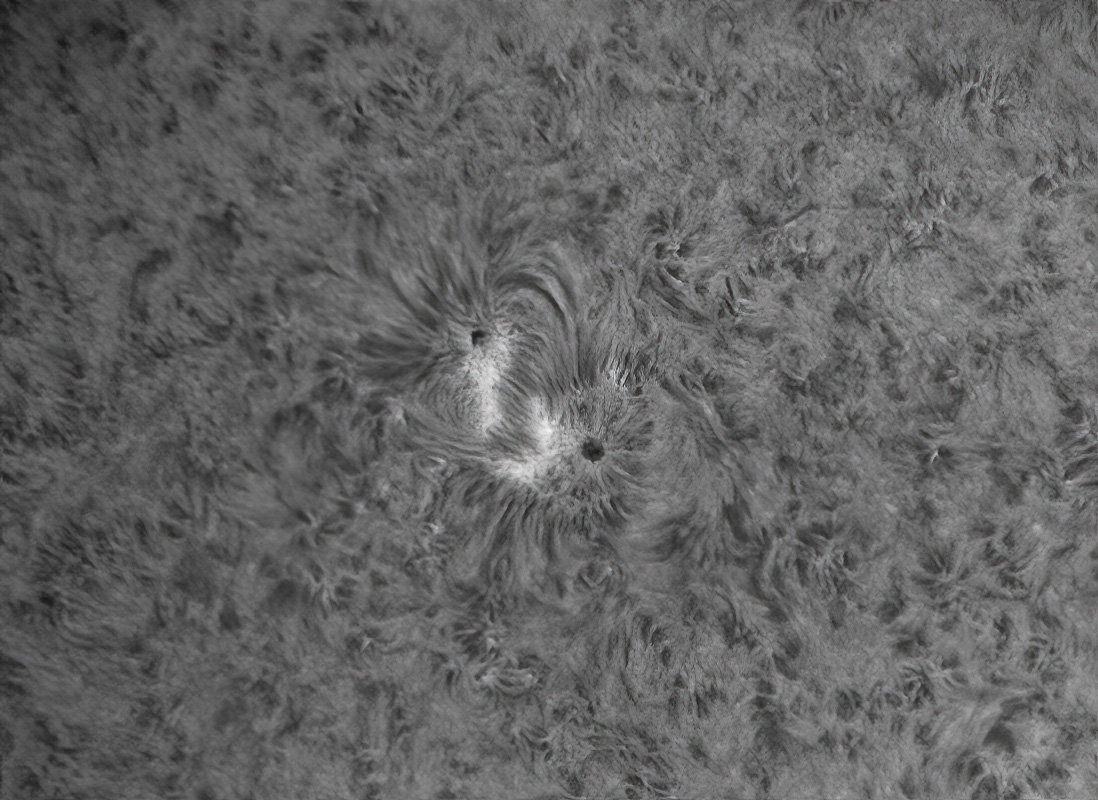
Iron filings anyone?
Best 250 frames of 1,000.
2021/07/23. I out-waited some small but glacial clouds, discovered a light-leak near the camera that's costing me contrast especially on prominence photos, customized the clip limits in ASIStudio (now I can do 500 frames and it no longer offers a few options I would never use). I've experimented (again) with the balance between gain and exposure, and am still just generally learning to get all my software doing what it should be doing. I just look at the clips and decide which are best focused, steadiest, etc., then run "Analyze" in AS!3 and take what it shows me into consideration: I don't take any images in the lower 50% of sharpness, and usually only the top 15-25% depending on how many frames are available -- taking less than 75-100 is seldom a good idea. Here's today's take, near noon from the lake access lot:
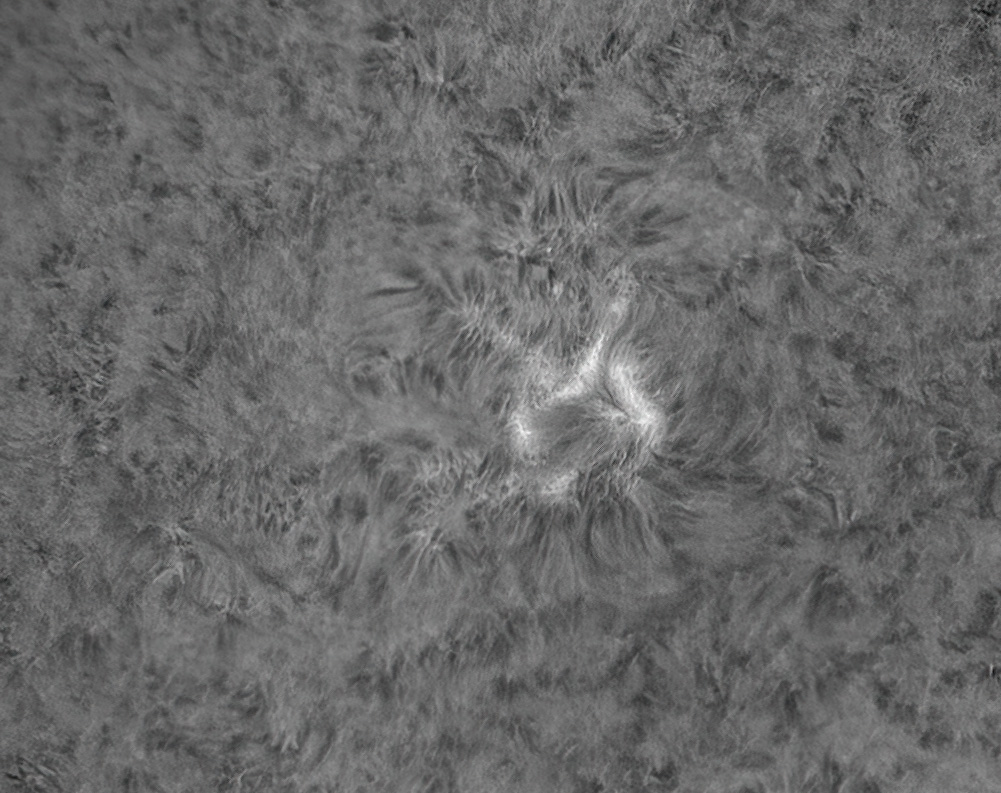
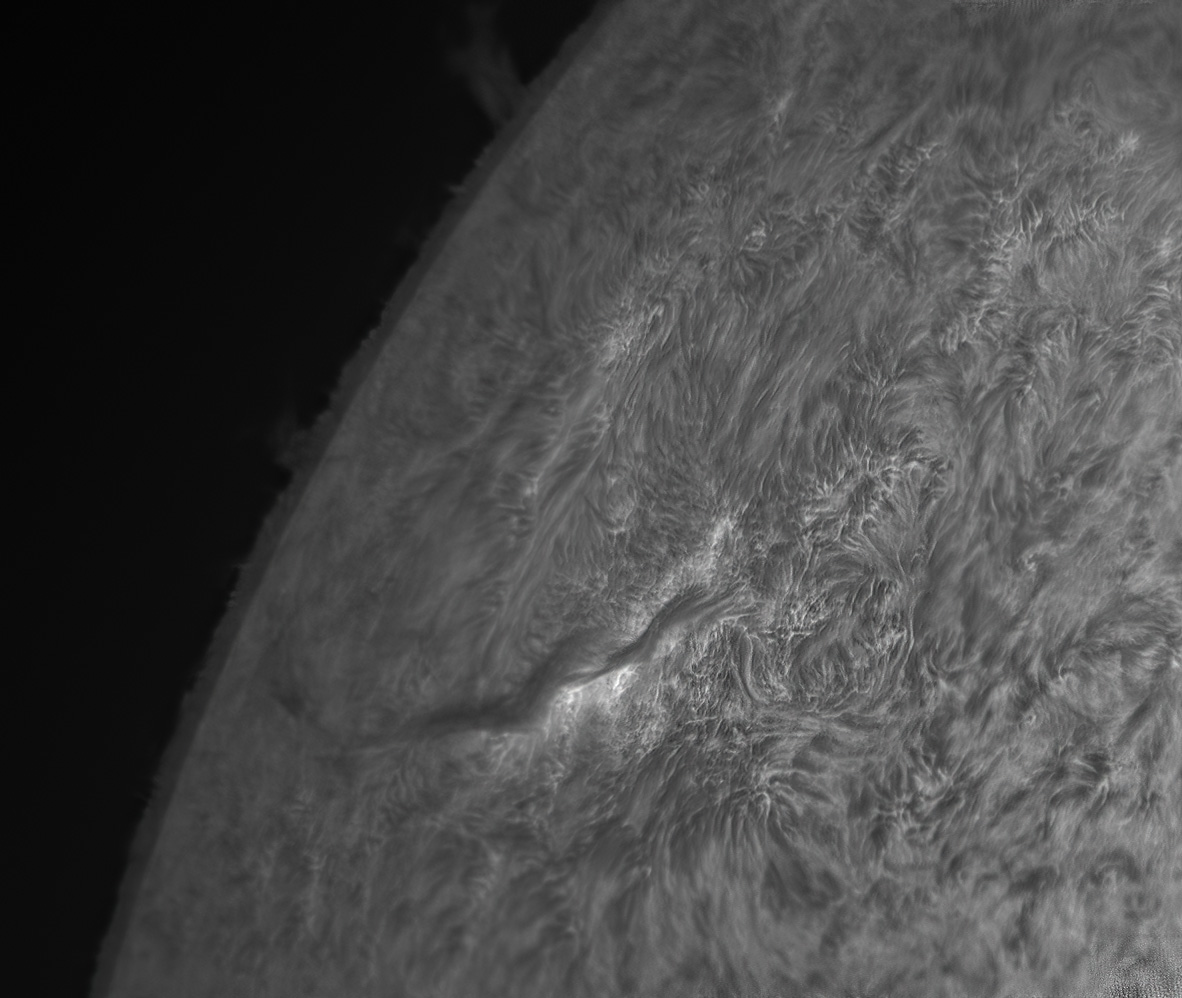
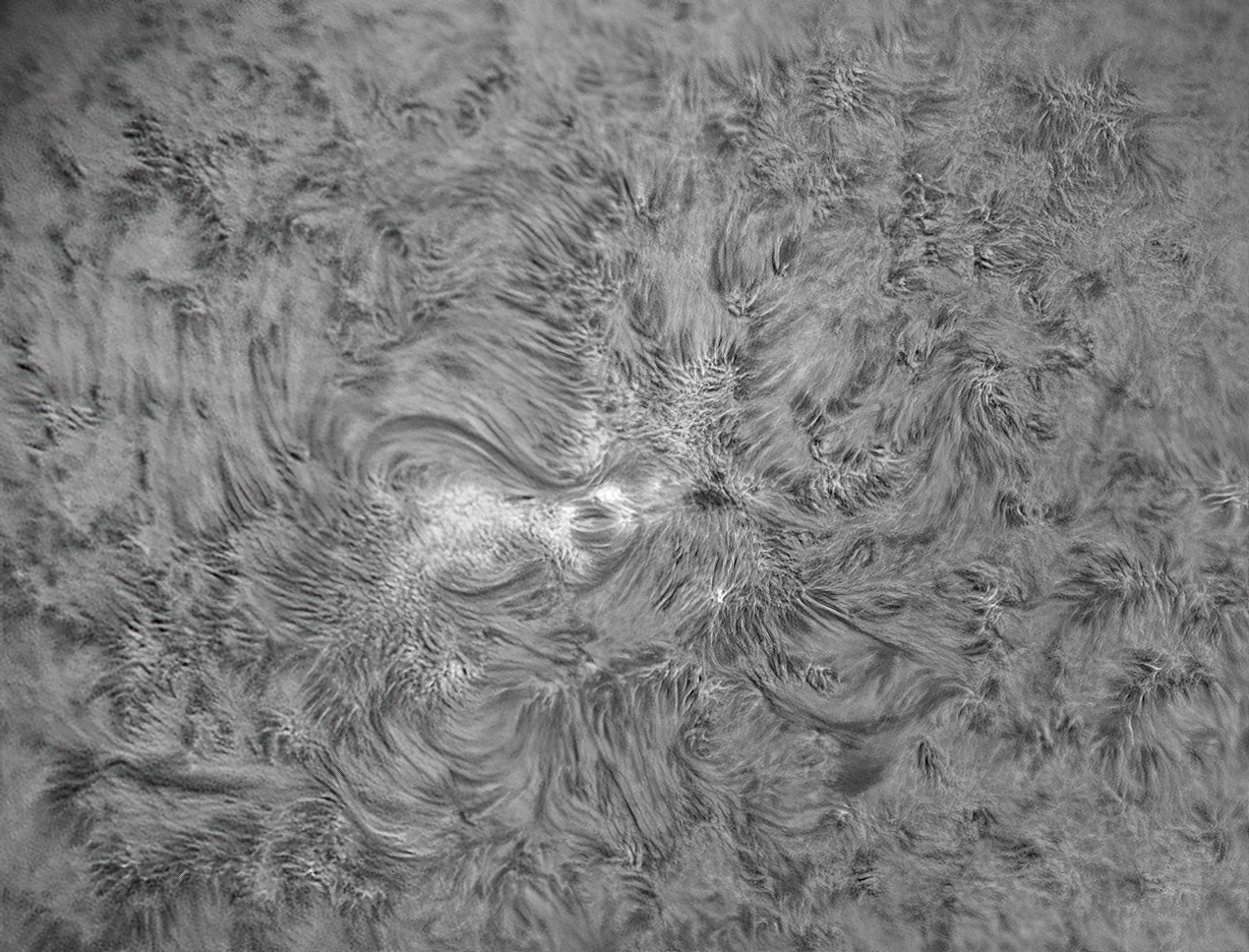
This one is the best 250 of 1,000 frames.